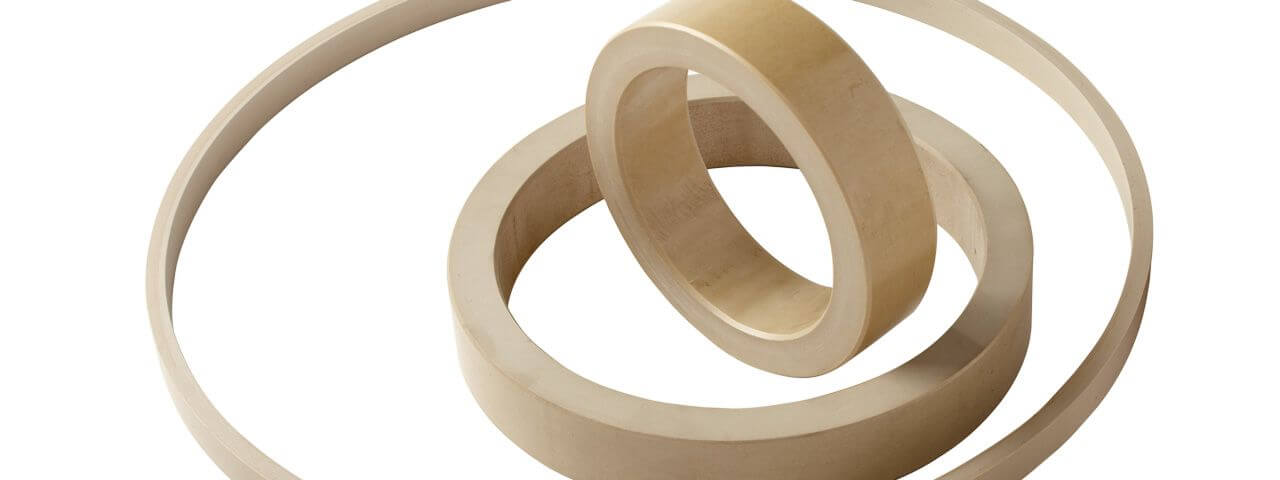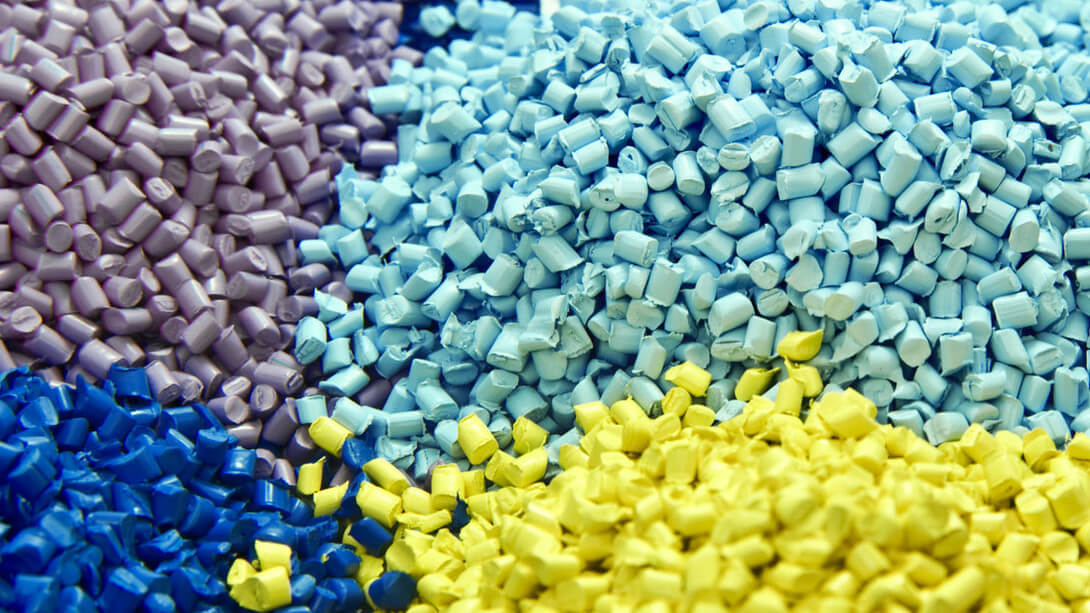There are three leading materials used for most back-up ring (BUR) applications: PTFE, Nylon, and PEEK. Each of these materials has specific benefits that it can bring to your application, starting with their stiffness and compressive strength.
Why Back-up Rings Are Important
Seal extrusion is one of the most common causes of polymer seal failure. Whether the cause of extrusion is a large gap between the mating surfaces, high temperatures, or extreme pressures, back-up rings can help. The right choice of a BUR can prevent seal extrusion, lengthen the useful life of the seal, and reduce the chances of a catastrophic failure.
PTFE Back-Up Rings
PTFE is well-known for its extremely low friction, dry running capabilities, and outstanding chemical resistance. Filled PTFE (either glass, carbon, graphite, or bronze filled) can handle operating pressures up to 5,800 psi, making it an excellent choice for both medium and high-pressure applications. Virgin PTFE has a much lower maximum operating temperature (around 3,600 psi) and is limited to low-pressure situations. PTFE also has a maximum operating temperature of 575°F, and that combined with chemical compatibility and the high-pressure capabilities of filled PTFE mean that it is an excellent option for harsh condition environments.
Nylon Back-Up Rings
Nylon 6,6 (sometimes written Nylon 6/6 or Nylon 66) is a polyamide material commonly used for back-up rings. It can handle high pressure very well but is limited to temperatures below 186°F. It possesses excellent rigidity, good compressive strength, and thermal stability, all of which are key to effective backup rings.
When used for back-up rings, Nylon is typically filled with Molybdenum Disulfide (MoS2) to achieve an even lower coefficient of friction. It is not recommended for use in wet or humid environments because it does absorb water unless fillers such as glass are added to offset the absorption effects.
PEEK Back-Up Rings
Another commonly used back-up ring material is PEEK, which can handle temperatures of up to 500°F and pressures up to 20,000 psi. Like PTFE, it is low friction, dry running, and resistant to a wide variety of aggressive chemicals. It is also available with fillers to enhance properties such as compressive strength and stiffness. However, PEEK is much harder than PTFE: PTFE has a Shore hardness of D50 while PEEK has a significantly greater hardness of D85. For these reasons, PEEK back-up rings are often used in aggressive environments, such as those found in the oil and gas industry.
Conclusion
If you are having issues with extrusion-related seal failure, polymer back-up rings are a cost-effective solution that can extend the life of your seals. When it comes to polymer back-up ring materials, the top three choices are PTFE, Nylon, and PEEK. While each has its own pros and cons, they are excellent options for solving the problem of seal extrusion. PEEK works best for high pressure, high temperature environments that can involve exposure to corrosive materials. PTFE can also handle high temperatures and corrosive environments, but its maximum operating pressure is lower than that of PEEK. Nylon is also an excellent choice with excellent hardness and thermal stability, with its main limitations being high temperatures and exposure to humidity and moisture.



 PAI stands for Polyamide-imide and it is the highest performing polymer that is melt-processable. It offers excellent wear resistance, has an extremely low coefficient of friction, and can handle operating temperatures up to 500°F. The primary drawback of Torlon PAI lies in its relatively high level of moisture absorption. On the other hand, it has a low coefficient of thermal expansion and a high level of creep resistance, both of which are key characteristics for an effective bearing. Torlon PAI is often used in
PAI stands for Polyamide-imide and it is the highest performing polymer that is melt-processable. It offers excellent wear resistance, has an extremely low coefficient of friction, and can handle operating temperatures up to 500°F. The primary drawback of Torlon PAI lies in its relatively high level of moisture absorption. On the other hand, it has a low coefficient of thermal expansion and a high level of creep resistance, both of which are key characteristics for an effective bearing. Torlon PAI is often used in